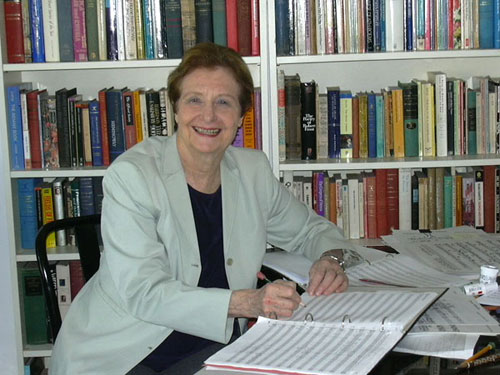|
Composer's Comments
Before starting the O’Neill work, I had been involved for more than ten
years with two large (grand) operas, one in German “Nemo: Jenseits von
Vulkania” and “All Quiet on the Western Front.” I had already started
composing “All Quiet on the Western Front” in 1990, but then received a
commission to write Nemo. It was to be based on a libretto written by
the commissioning party, an American who lived in Baden-Baden, Germany,
who had heard me give a talk there about my orchestral work “Chernobyl.”
During those ten years I constructed the two libretti, composed
the music, had the scores and parts professionally typeset, and then
arranged for both works to be professionally recorded. After that I wanted to work for a while on something on a smaller scale
and decided on a chamber opera. I sat down one evening determined not to go to bed until I had
found a suitable libretto, one in the public domain, if possible.
We had a large collection of books of American literature, since my
husband had majored in English as an undergraduate and then did a
Master’s degree in American Literature. I find it much easier to work
with a play then to construct the dialog for a libretto myself, so the
collected works of Eugene O’Neill were an excellent place to start my
search.
|
 |
|
Nancy Van de Vate working in her apartment on "Where the Cross
is Made"
|
“Where the Cross is Made” has everything one needs for a good libretto
– dramatic tension, lots of emotion, a surprise ending, a skewed sense of
reality, and interesting characters. It is also relatively compact. So
once I found it, I didn’t look any further and went to work on it
immediately. That was in the spring of 2003.
Unlike many composers, I do not compose a piano score first, then
orchestrate later. For me the instrumental colors are so much a part of
the sound of an opera, that I compose the full version first, then have
to make a version with piano after. The piano version, incidentally, is
what is always used for rehearsals – even in the world’s biggest
houses – until about two weeks before an opera actually goes on stage.
At some point I noticed an announcement for a chamber opera competition.
Although I normally don’t enter competitions, this one had anonymous
submission of scores, so I decided to submit an entry. The competition
stipulated that the orchestra be limited to not more than 20
instruments, so I kept the orchestra in “Cross” to that size. However,
it was more than enough, both in terms of volume and instrumental color.
The problem for composers who don’t have a major publisher is that when
we die, so do our works. Although mine are archived in many collections
in the US and Europe, that doesn’t make them available for performance.
Thus, I am pleased to make the masters for "Where the Cross is Made"
available on eOneill.com for any person or group without cost. My
interest is just to make these materials as readily accessible as
possible. |